Holly hits 50: how Breakfast At Tiffany’s came to the screen and changed everything
Good golly, Miss Holly: Audrey Hepburn as the irrepressible, irresistible Holly Golightly in Breakfast At Tiffany’s – perhaps the signature role of her delightful, unforgettable career
Blogs are supposed to be sources of personal opinions, assertions and divulgences, so perhaps it’s time I offer you up a confession, folks. And here it is. I was 19 years-old and in my first year of university: fashionably, I had a poster on my wall of Jennifer Aniston; unfashionably, I fell hopelessly in love with Audrey Hepburn. And the latter had absolutely everything to do with my very first viewing of Breakfast At Tiffany’s (1961).
Like it had for so many peeps before and has for many more since, that movie and the angelic Audrey in the titular role of Holly Golightly utterly bewitched me. I must have watched my recorded-from-the-TV VHS version of the film God knows how many times over the next year or two. It’s a wonder that, like I had as a 10 year-old with my tapes of The Spy Who Loved Me (1977) and Moonraker (1979), I didn’t wear it out. But why did I fall for it so?
Well, there’s the look; the cool, glamorous yet breezy early ’60s interpretation of Manhattan it features. There’s the contrast of sunshine and heartbreak in the atmosphere it conjures up. There’s the smooth, jazzy score from Henry Mancini that also offers the dreamy, sad signature tune Moon River. There’s the wit, sass and warmth of the script, delivered so wonderfully by a cast including Patricia Neal, Martin Balsam, Buddy Ebsen and George Peppard (whose so-called writer character I so identified with – and still do). And, as said, above everything else there’s Audrey; beautiful and kooky, jubilant and sad, innocent and worldly-wise Audrey with her ginger cat with no name (aside from ‘Cat’, of course).
In hindsight, as a romantic, oft melancholic 19 year-old already in love with the movies and with a penchant for the oh-so cool feel of the early ’60s, it was inevitable I’d fall hook, line and sinker for Holly and co. Yes, me and Breakfast At Tiffany’s; it was kismet.
Truman’s blues: Capote with Audrey Hepburn (and husband Mel Ferrer) (l) and Marilyn Monroe (r) – although friends with both, he far from approved of the former’s casting over the latter
Years later now, I must admit it’s no longer my favourite film. People move on and wistful students grow up. It still holds a fond place in my heart, don’t get me wrong, but it no longer feels like ‘my film’. In fact, since I was that 19 year-old I’ve come to realise in just how many hearts Breakfast At Tiffany’s holds a fond place; just how popular a flick it is – and just how big an impact on popular culture it’s had in its 50-year existence. For, yes, that’s right, this year – in fact, officially last Wednesday (October 5) – Breakfast At Tiffany’s celebrated a half-century since it was first released in cinemas.
But, unlike much in the movie, its journey to the screen was neither sophisticated nor carefree. In 1958, American writer Truman Capote – who would achive great acclaim with the murder-themed ‘non-fiction novel’ In Cold Blood (1966) – authored a novella named, yes, Breakfast At Tiffany’s. It told the tale of a free-spirit named Holly Golightly, who has run away from a marriage in the Dust Bowl to Manhattan’s Upper East Side and earns her keep as (in the words of Capote himself) an ‘American geisha’. Set in the early 1940s and told from the point-of-view of a homosexual, Capote-like observer, it boasts glamorous and faux yet believable characters and drips with atmosphere and melancholia.
Drawn from the author’s own experiences of growing up in Manhattan and, to some extent, people he knew, Breakfast At Tiffany’s first featured in the November ’58 issue of Esquire magazine and went on to be published in book-form with three Capote short stories. Readers quickly drew comparisons between Holly Golightly and Sally Bowles from Goodbye To Berlin (1939) by Capote’s mentor Christopher Isherwood – the character who would later be immortalised by Liza Minnelli in Cabaret (1972), the musical film adaptation of the latter work. Nevertheless, Capote’s tale struck a chord with both critics and the public (contemporary Norman Mailer hailed him: “the most perfect writer of my generation… [I] would not have changed two words in Breakfast at Tiffany’s”), ensuring it became a hit and Hollywood was soon interested in giving it the big screen treatment.
Capote sold the rights to Paramount Pictures and knew what he wanted from the eventual movie. First of all, he was adamant who should play his (anti-)heroine. In the novella, Holly Golightly is an 18-19 year-old; as much an inexperienced teenager as a worldly young woman. She has a hard, flinty-like exterior too, but underneath is so vulnerable it feels she could be snapped in two at any moment. For Capote then, the ideal casting for her would be none other than Marilyn Monroe. Looking at it that way, it makes perfect sense – indeed, Marilyn was actually another influence on Capote’s realisation of Holly. And it seems Paramount had no objections to the idea, so much so they hired scriptwriter George Axelrod – who had written the Monroe-headlined films The Seven Year Itch (1955) and Bus Stop (1956) – to tailor a script specifically for her.
“Paramount double-crossed me in every conceivable way. Holly had to have something touching about her – unfinished. Marilyn had that. Audrey is an old friend and one of my favourite people, but she was just wrong for that part.’’ ~ Breakfast At Tiffany’s author Truman Capote on the casting of Audrey Hepburn instead of Marilyn Monroe as Holly Golightly
However, this idea was fast to hit the buffers, not least because, well, that’s exactly what poor old Marilyn was doing. The demise of both Monroe’s movie career and her life are infamous – almost every film fan knows that her last completed flick was The Misfits (1960) and just how difficult a shoot that was owing to her personal troubles. In actual fact, though, the specific reason why Monroe didn’t take the role was because she was advised against it by her acting guru, the legendary coach Lee Strasberg. He opined that playing a character who was, however you dressed it (or her) up, a prostitute would be very much the wrong step at this stage in her career.
The film’s producers then, Martin Jurow and Richard Shepherd, needed someone else – and it was now that they turned to Audrey Hepburn. Ironically, given how iconic a role in her canon it would become, she wasn’t interested at first. Like Monroe, and you couldn’t really blame her, she wasn’t crazy about playing a hooker. But the producers persisted, telling her that that’s not who Holly was; she was really a ‘dreamer of dreams, a lopsided romantic’. Audrey wasn’t convinced by the director they’d chosen either, as she hadn’t heard of him. In an effort to please her they instead hired Blake Edwards, helmer of recent knockabout submarine comedy hit Operation Petticoat (1959), which had starred Cary Grant and Tony Curtis. The director they’d let go was, in fact, John Frankenheimer who, now free, would instead go on to make two Hollywood classics, Birdman Of Alcatraz and The Manchurian Candidate (both 1962).
In the end, Jurow and Shepherd got their girl. According to a book published this year, Breakfast at Tiffany’s: The Official 50th Anniversary Companion, by Sarah Gristwood, Blake Edwards himself flew out to Switzerland to charm Audrey. Gristwood writes: “Edwards joined Hepburn’s husband, her agent and even her mother in convincing her that the style he would use to shoot the picture would effectively purify the part”. Unsurprisingly, at the news of this casting, Capote got the mean reds. Or just saw red. But, from his point of view, it would only get worse.
As mentioned, in the novella the character of Paul ‘Fred’ Varjak, the sensitive narrator who becomes fascinated with Holly, was most definitely a gay man. For their film version, the producers cast a rising actor, the handsome, strong-jawed George Peppard, who was most definitely not a gay man. It was pretty obvious then, this being the early ’60s, the film version of Paul would be heterosexual – plus, it turned out, a love-interest for Holly. Moreover, a pivotal character in Capote’s book was a bartender named Joe Bell; right or wrong, Joe didn’t make the cut for the movie at all. It must have become increasingly clear to Capote that Jurow and Shepherd really had no intention of filming a faithful adaptation of his book.
.
Still, filming got underway, but it too wasn’t without its problems. Unfortunately, the off-screen chemistry between Hepburn and Peppard was, well, off. It wasn’t that they disliked each other, which nobody has ever suggested they did, but that their approaches to the project clashed.
Audrey had always and would always be an actress of spontaneity and intuition; she was neither trained nor particularly intense in her methods (although she had experienced her fair share of intensity, such as an absent father, two miscarriages and growing up in Nazi-occupied Holland). She was a supreme comedy actress, gifted with perfect timing and an infectious, natural sparkle. Conversely, Peppard was trained and – at least at this early stage of his career, years before he became Colonel John ‘Hannibal’ Smith in TV’s The A-Team (1983-87) – took his craft seriously. If anything, he saw his role as the movie’s main character. But while Paul/ ‘Fred’ is often the audience’s point of reference and arguably the central character, it’s patently clear who the star of Breakfast At Tiffany’s is and, thus, to whom the main role belongs. And it ain’t George Peppard.
Filming was complicated further when the important first scene, over which the opening titles play and which critically dramatises the movie’s title, proved surprisingly difficult to capture. For this was in spite of the fact that its location (outside Tiffany’s jewellery store on Fifth Avenue in the heart of Manhattan) enjoyed an unexpected traffic lull at the precise time the cast and crew had rolled up for filming. Unfortunately, controlling the large crowds who’d turned up to watch, a crewman’s near electrocution in a freak on-set accident and, yes, Audrey’s dislike of pastry (Holly eats a pastry snack along with sipping a coffee as she gazes into Tiffany & Co.’s window) all combined to test the relatively green Edwards’ directorial chops. However, the scene was of course captured and now is revered and recalled as one of the flick’s best loved moments (see video clip above) – full of bittersweet, almost irresistible appeal thanks, in no small part to the theme of Moon River playing over the top of it.
Incidentally, Edwards chose not to use Manhattan locations for every exterior scene – who knows, maybe because of potential crowd-control difficulties. While most exterior shooting did make use of real Manhattan locales (such as the outside of Holly and Paul’s Upper East Side apartment building), the scene in which Audrey and George look for Cat (the film’s final scene), as well as the one in which Audrey sits on a fire escape strumming her dinky guitar as she sings Moon River (probably my favourite of the entire movie; see bottom video clip) were filmed at Paramount’s studio lot in Hollywood, as were the vast majority of the movie’s interior scenes. In fact, even some of the scenes supposedly set inside Tiffany’s – when Holly and Paul visit the store on their day out around New York – were also filmed at Paramount.
Putting on a brave face?: Peppard and Hepburn joke on-set (l), but their opposing approaches led to difficulties for Blake Edwards, whose face (r) suggests the challenge the shoot was
With its somewhat challenging shoot complete, Breakfast At Tiffany’s now needed to find its sound. And, let’s be honest, in the hiring of Henry Mancini as composer, did it ever.
It was Edwards’ choice to bring Mancini on board owing to the former’s previous success in coming up with the memorable theme tune for TV show Peter Gunn (1958-61), on which Mancini had actually worked with the former (the two, of course, would combine again on the highly popular Peter Sellers-starring Pink Panther film series). A protégé of jazz great Glenn Miller, Mancini was always going to go down the jazz route with Breakfast At Tiffany’s. And the score he delivered for the movie perfectly reflected its on-screen smooth urban sheen and sometimes sentimental, other times off-beat feel. Indeed, listen to the theme from the film actually entitled ‘Breakfast At Tiffany’s’ in the video clip below; it’s light, wispy, smooth, cool and uplifting, as well as – although it’s not Moon River – instantly recognisable.
And then, of course, there’s Moon River. The piece of music for which Breakfast At Tiffany’s itself will always be most recalled, it’s the film’s unofficial theme, as well as that of its protagonist, Holly Golightly. Mancini’s tune is complimented by pitch-perfect lyrics by singer and songwriter Johnny Mercer, who actually provided three separate sets of lyrics for the project – the adopted lyrics being chosen by Mancini as best fitting Audrey in the title role, given they seem to refer to the loss of her character’s brother Fred (her ‘huckleberry friend’) and hope for a future better than the present with someone special (‘we’re after that same rainbow’s end, waitin’ round the bend’).
The song has become a firm favourite with the public, having been covered by over 90 artists over the years, but Mancini always felt the best version was recorded by the person for whom it was written: “No-one else has ever understood it so completely [as Audrey Hepburn did]. There have been more than a thousand versions, but hers is unquestionably the greatest.” Bizarrely, prior to the film’s release, Paramount wanted to remove the song from the soundtrack, only for Audrey to exclaim: “Over my dead body!”.
“A movie without music is like an aeroplane without fuel. Your music has lifted us up and sent us soaring. Everything we cannot say with words or show with action you have expressed for us. You have done this with so much imagination, fun and beauty. You are the hippest of cats – and the most sensitive of composers!’’ ~ Audrey Hepburn in a letter to composer Henry Mancini about his film scoring of Breakfast At Tiffany’s
In the end, all the difficult, hard work paid off. Breakfast At Tiffany’s was a big box-office hit – the seventh biggest of its year in the US, in fact, where it made around $14 million; $1 million more than the legendary wartime adventure The Guns Of Navarone (1961).
And the critics lapped it up as much as the punters. On its release, Time magazine recognised that as an adaptation of Truman Capote’s novella, the movie certainly sanitised its story and characters, but that wasn’t necessarily a bad thing, opining that “for the first half hour or so, Hollywood’s Holly (Audrey Hepburn) is not much different from Capote’s. She has kicked the weed and lost the illegitimate child she was having, but she is still jolly Holly, the child bride from Tulip, Texas, who at 15 runs away to Hollywood to find some of the finer things of life — like shoes.”
Meanwhile, in reviewing the film, The New York Times called it a “completely unbelievable but wholly captivating flight into fancy composed of unequal dollops of comedy, romance, poignancy, funny colloquialisms and Manhattan’s swankiest East Side areas captured in the loveliest of colors”.
Moreover, the movie proved a magnet for award nominations. For her performance as Holly, Audrey was nominated for an Oscar for Best Actress, a Golden Globe Award for Best Actress in a Musical or Comedy and a David di Donatello (Italian film industry) Award for Best Foreign Actress; Blake Edwards was nominated for the Directors’ Guild of America award; George Axelrod’s script was nominated for an Oscar for Best Adapted Screenplay and won the Writers’ Guild of America (East)’s award for Best Written American Drama; and, most notable (and maybe most deserved) of all, Henry Mancini won Oscars for both his score and – along with Johnny Mercer – for Moon River (Best Original Song), along with a Grammy for the score.
.
But it’s really over the years since the mere months after its release that Breakfast At Tiffany’s has enjoyed the popularity and acclaim to which so many of us today are familiar. The movie’s acquisition of the oh-so enviable status of ‘Hollywood classic’ wasn’t an overnight thing; like a rolling stone gathering gold dust rather than moss, it took decades for it to be perceived rightfully as the celluloid nugget it is. And, quite frankly, that’s really down to fashion – but in two very different ways.
First, relatively soon after its release and for years afterwards, the genre of the Hollywood romantic comedy and, thus, Breakfast At Tiffany’s itself, was out of fashion. As noted in these two previous posts on this blog (1 and 2), Tinseltown’s output during the ’60s and ’70s went through dramatic changes to reflect the shifting social attitudes and issues of the times. ‘New Wave’-informed, counter-culture efforts and hard, gritty dramas steeped in neo-realism became the order of the day, leaving out in the cold the urbane and sophisticated, but generally pretty innocent rom-coms that’d had made hay in the preceding years. Filmmakers still made romcoms, of course – indeed, Woody Allen scored Oscar-winning success with Annie Hall in 1977 – but such high points tended to be few and far between and, if anything, attempts to revise the genre.
One may argue then, it wasn’t until the end of the ’80s that cinemagoers and, therefore, Hollywood fell back in love with the romcom, thanks to the huge commercial and critical success of When Harry Met Sally… (1989). Full of wit, sass and fine byplay between its two leads like the very best of the genre of old, this was the perfect modern updating of the romcom and fittingly set its female star Meg Ryan off on a career driven by similar fare, as if she were, well, the ’90s Audrey Hepburn.
Indeed, from then right up until now, multiplexes have been bulging with romantic comedies and inevitably yesteryear’s very best efforts such as the Cary Grant/ Katharine Hepburn starrer Bringing Up Baby (1938), the Doris Day/ Rock Hudson-headlined Pillow Talk (1959) and, yes, Breakfast At Tiffany’s have been rediscovered and are happily en vogue once more.
Thoroughly modern Hollies: Natalie Portman in Givenchy’s original Holly Golightly dress for the Harper’s Bazaar September 2006 issue (l), Zooey Deschanel advertising Oliver Peoples sunglasses in summer 2009 (m) and Anne Hathaway in a Vogue November 2010 shoot (r)
In actual fact, despite its modern adoration, the rediscovery of Breakfast At Tiffany’s has resulted in more negative examination of it, owing to one of its characters, than other classic romcoms. And rightly so really. Conceived as knockabout light-relief, the interpretation of Holly’s Japanese neighbour Mr I Y Yunioshi by Hollywood legend Mickey Rooney as an affected Oriental stereotype, complete with a prosthetic mouthpiece, has unsurprisingly fallen foul of modern PC opinion.
I can’t deny I’ve always felt rather awkward watching his moments in the film – by today’s standards the portrayal of the character certainly seems misguided. However, Rooney has maintained that until relatively recently he was aware of no criticism, claiming that whenever he met an Asian-American they had nothing but praise for the role, yet the criticism of today has stung him and he’s said had he been aware people would be offended, he would never have done it. Both Blake Edwards and Richard Sherpherd have admitted regret over the portrayal too.
All the same, this very specific criticism hasn’t seriously impacted on the resurgence of Breakfast At Tiffany’s. And, in no small part, that’s doubtless due to the other reason the movie’s modern popularity can be put down to fashion. And, by fashion, this time I literally mean fashion.
Nowadays, you’d have to be a Buddy Ebsen-style Doc Golightly not to be aware of the fact that Audrey Hepburn is revered as one of the biggest – if not the biggest – of history’s style icons. And her fond place in the hearts of fashionistas the world over owes a vast amount to Breakfast At Tiffany’s. Yes, it’s a film that plays around with the glamorous image that Manhattan projected in the early ’60s and, of course, features the jewel at the heart of the high street diamond business that is Tiffany’s & Co. itself, but the flick’s fashion credentials most of all rest on Audrey’s shoulders in the shape of the garment that rests on her shoulders in that unforgettable opening scene, namely that little black dress.
“[Audrey Hepburn] didn’t go to acting schools, she didn’t hear the word Strasberg, she did not repeat in front of the mirror. She was just born with this kind of quality and she made it look so unforced, so simple, so easy.” ~ legendary Hollywood director Billy Wilder fundamentally disagrees with Emma Thompson on Audrey Hepburn’s acting talent
The creation of legendary French fashion designer Hubert de Givenchy – who first decked out Hepburn in her second Hollywood flick Sabrina (1954) and became firm friends with her thereafter – it was specifically requested as Holly’s night-time dress-up best by Audrey herself and made it into the film after some slight alterations (including the removal of a long slit that would have revealed a great deal of leg) by costume designer Edith Head. A mainstay of modern, elegant female fashion, the ‘little black dress’ is as unavoidable an item of today’s world as the laptop, the alcopop and the hoodie – and, while its origins date back to Coco Chanel’s design from the 1920s, Holly Golightly’s is undeniably one of the most important.
As if to underline that fact, on December 5 2006 (following its modelling in Harper’s Bazaar magazine by Natalie Portman; see image above), one of the original dresses produced for the film was auctioned at Christie’s in London and reached an astonishing £467,200 (US$923,187) – more than six times its asking price. The money raised went to a charity to build a school in Calcutta, India.
But it’s not the dress on its own. Images of Audrey from Breakfast At Tiffany’s (especially those in which she wears the dress and has Holly’s over-long cigarette holder plonked in her mouth) have nowadays become so popular they’re positively iconic. You can buy not just prints of such images, but handbags, wall clocks and mouse pads adorned with them. It’s as if those images, the film and Audrey herself have become the same entity: chic style at its absolute zenith. Indeed, so ubiquitous has the whole thing become that it seems not a year goes by when one of Hollywood’s starlets jumps at the chance to recreate the Audrey/ Holly look – the Portman image and those of Zooey Deschanel and Anne Hathaway above are merely some of the latest. Indeed, you need only look on the ‘Net to see how far the cult of all things Holly-cool has spread: want to get as close as possible a pair of Ray-Bans to those Holly wears? Check these out… want a bathtub-come-sofa just like hers? Check this out… And so on and so forth…
And yet, fashion is, of course, just surface gloss; there’s much more to Breakfast At Tiffany’s than just how it – and Audrey in it – looks. For, though the movie may be 50 years-old, it’s an ageless concoction of cool, off-kilter, romantic, melodic charm that peeps from practically every demographic have fallen for, just as they have for its leading lady. Capote may not have approved, but millions of Holly and ‘Cat’-lovers certainly do. And, well, who am I kidding? I haven’t really moved on that far and, deep down, I’m still that wistful 19 year-old student – there’s little of me that doesn’t still love the film and its star player. Because me, Audrey and Breakfast At Tiffany’s; it was kismet. And always will be. 
Trackbacks
- Purrfectly pink/ Diamond geysers? The Pink Panther (1963)/ A Shot In The Dark (1964) ~ Reviews | George's Journal
- Tardis Party: Doctor Who serial close-up ~ The Talons Of Weng-Chiang (S14/ 1977) | George's Journal
- Shoulda, woulda, coulda? The top 10 worst ever Oscar decisions | George's Journal
- ミュージカル『ローマの休日』|ブロードウェイ版の最新情報【公演日程・キャストなど】 - Art & Sports = Life
- オードリー・ヘップバーンの仮装&衣装&コスプレ特集「ティファニーで朝食を」 - ハロウィーン&仮装のことなら スパカリ!









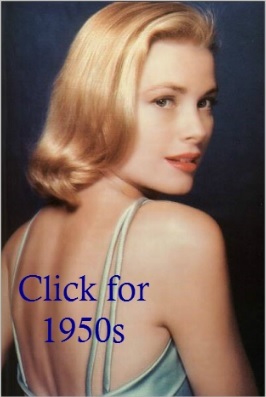

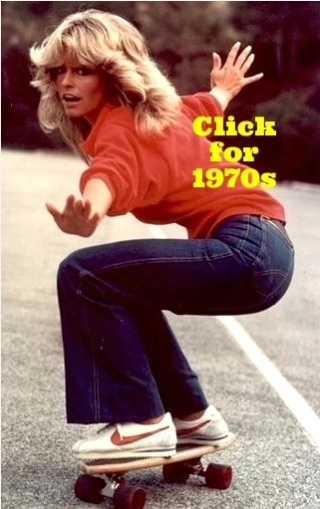
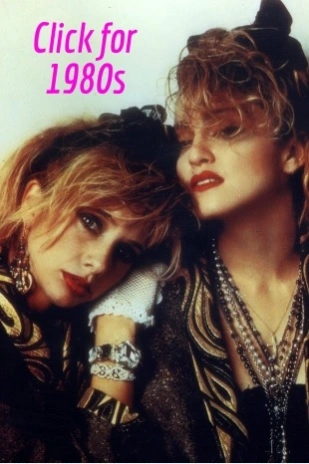

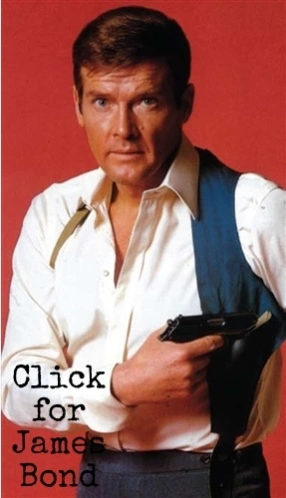

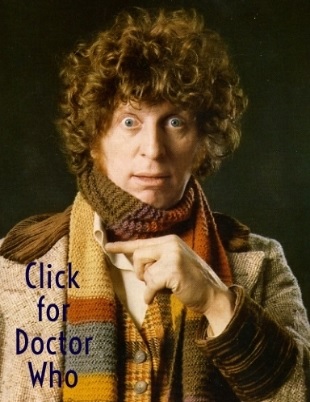
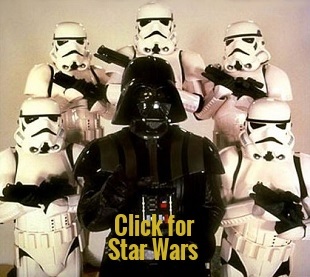

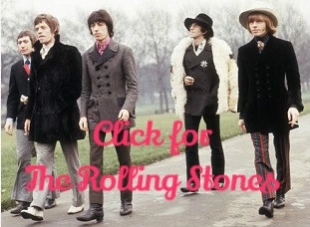

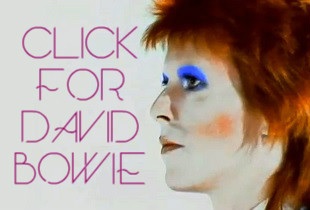
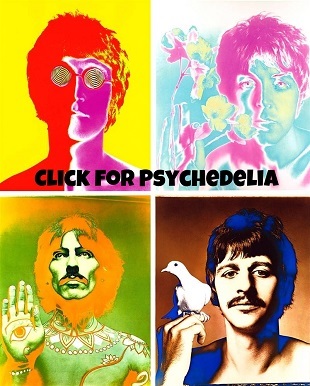




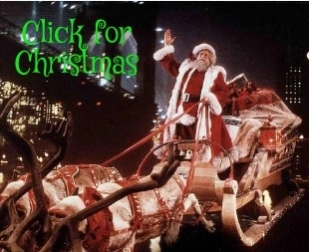
Great post.